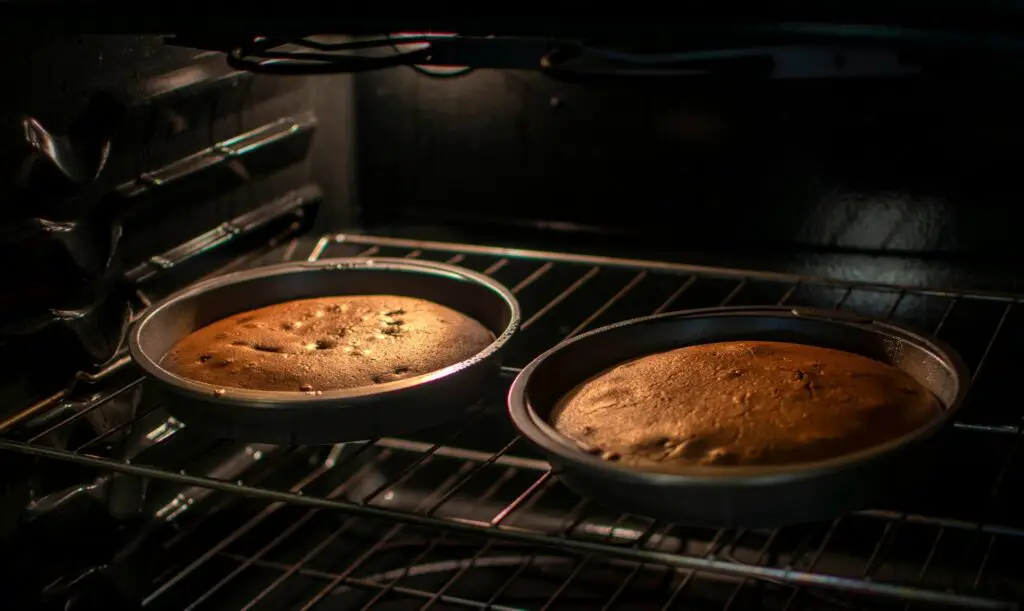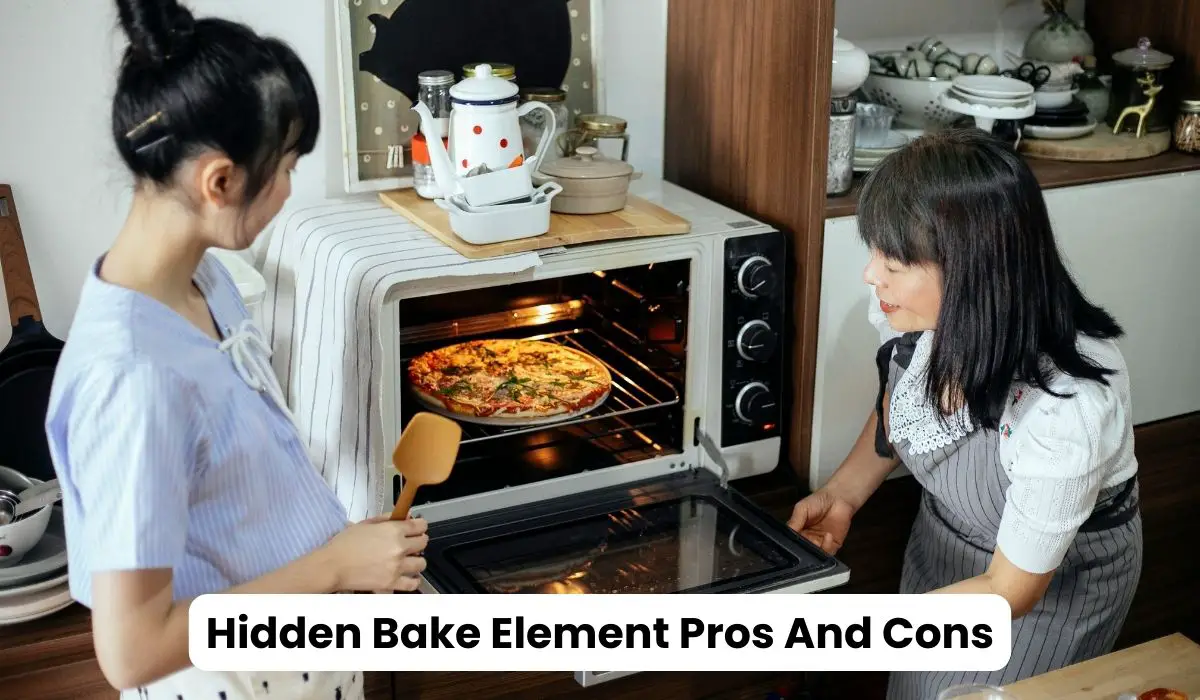When it comes to ovens, there’s a hidden secret that many of us might not be aware of – the hidden bake element. You see, the hidden bake element is a crucial component in many modern ovens, and it comes with its own set of pros and cons. But what exactly is a hidden bake element, and why should you care? Well, imagine your oven as a magical box that turns your raw ingredients into delicious, mouthwatering dishes.
The hidden bake element is like the secret ingredient in a recipe that can make or break your culinary creations. In this article, we’ll unravel the mysteries of the hidden bake element, exploring its pros and cons so you can better understand the heart of your oven and cook up a storm with confidence. Whether you’re a budding young chef or a seasoned home cook, knowing the hidden bake element pros and cons will elevate your kitchen game to a new level.
Table of Contents
What is a Hidden Bake Element in Oven?

Picture your oven as a magic cooking box. It’s where all the delicious meals come to life, from cookies and cakes to pizza and roasted veggies. But to make this magic happen, your oven needs a special ingredient – the hidden bake element.
The hidden bake element is like a superhero of your oven, working behind the scenes to create the right temperature for baking and cooking. It’s called “hidden” because you can’t see it inside the oven. Instead, it’s hidden under the oven floor. You can think of it as a powerful, red-hot wire that heats up when you turn on your oven. This wire gets so hot that it makes the oven nice and toasty, perfect for baking all your favourite treats.
Now, let’s dig deeper into the hidden bake element’s role in your oven. When you set your oven to a specific temperature, like 350 degrees Fahrenheit (or 175 degrees Celsius), the hidden bake element starts to heat up. It can be as hot as 500 degrees Fahrenheit (260 degrees Celsius) or even hotter! This super-hot wire stays hidden under the oven floor, so it doesn’t get in the way of your cooking adventures.
The hidden bake element is like the engine of your oven, making sure it reaches the right temperature to cook your food to perfection. It’s like having a secret helper in the kitchen, making sure your cookies are golden brown, your pizzas are crispy, and your roasts come out tender and delicious.
So, the next time you bake a batch of cookies or roast a chicken, remember the hidden bake element quietly doing its job, turning your oven into a culinary superhero. It’s one of the reasons your oven can create all those amazing dishes you love.
Hidden Bake Element Pros And Cons:

Pros of a Hidden Bake Element:
1. Easy to Clean
One of the biggest advantages of a hidden bake element is that it’s much easier to clean. In traditional ovens, the exposed baked element can get dirty with food spills and crumbs. Cleaning it can be tricky, but with a hidden bake element, there’s no need to worry. Since it’s concealed beneath the oven floor, spills and drips can’t reach it. This means less scrubbing and more time for fun activities.
2. Safety First
Hidden bake elements are safer, especially if you have curious little ones at home. In a traditional oven, the exposed element can be a hazard if you accidentally touch it. With a hidden bake element, the risk of burns is minimized because it’s tucked away from prying fingers.
3. Even Baking
Hidden baked elements often provide more even baking. That means your cookies and cakes come out perfectly cooked without hot spots or uneven browning. It’s like having a magical wizard inside your oven, ensuring that every corner of your food is cooked to perfection.
4. Spacious Interior
Without a visible bake element taking up space in the oven, you have more room for larger dishes and trays. This is great when cooking for a big family gathering or a special occasion.
5. Aesthetic Appeal
Hidden bake elements give ovens a sleek and modern look. They make the oven’s interior more attractive, and the absence of a visible element allows for a smoother oven floor. It’s like having a clean canvas to create your culinary masterpieces.
Cons of a Hidden Bake Element:
1. Repairs Can Be Tricky
While hidden baked elements are more protected from spills and splatters, they can be challenging to repair or replace. If something goes wrong with the element, it may require professional help to access and fix it. This can be more expensive and time-consuming than replacing a visible bake element in a traditional oven.
2. Higher Initial Cost
Ovens with hidden baked elements are more expensive than traditional exposed elements. So, if you’re on a tight budget, this might be a drawback.
3. Longer Preheat Time
Some people have reported that ovens with hidden bake elements take longer. If you hurry to bake delicious cookies, this extra time might test your patience.
4. Not Suitable for Broiling
If you enjoy broiling food in your oven, you might find a hidden bake element less suitable. Broiling typically requires the top element to be exposed, and hidden bake elements are usually located on the bottom.
5. Limited Self-Cleaning Ovens
If you have a self-cleaning oven, it’s important to note that hidden bake elements may not be compatible with the self-cleaning feature. The extreme heat during the self-cleaning cycle could damage the hidden element. So, you might have to roll up your sleeves and clean it the old-fashioned way.
Summary: Hidden bake elements offer many benefits, such as easier cleaning, enhanced safety, even baking, more interior space, and a stylish appearance. However, they come with a few downsides, like potential repair challenges, higher initial costs, longer preheat times, limitations on broiling, and compatibility issues with self-cleaning ovens.
When choosing an oven with a hidden or a traditional exposed bake element, consider your cooking habits, budget, and preferences. It’s essential to weigh the pros and cons to find the oven that suits your family’s needs the best. Whether hidden or exposed, the baked element makes your oven a magical cooking tool. With a little understanding, you can make the right choice for your home.
Oven Hidden Bake Element Review:

The oven-hidden bake element is a crucial component that plays a silent yet significant role in the cooking process. Unlike the exposed bake elements found in some ovens, the hidden bake element is tucked away beneath the oven floor, providing a sleek and streamlined appearance. This oven design not only looks great but also simplifies cleaning.
One of the standout advantages of a hidden bake element is its ease of maintenance. Traditional exposed baked elements are prone to collecting spills and food debris, which can be challenging to clean. On the other hand, the concealed nature of the hidden bake element prevents such mishaps, making it simpler to keep your oven spotless. This feature is particularly beneficial for those who value a tidy kitchen. Still, it may need more time for extensive cleaning routines.
Moreover, the hidden bake element contributes to a more even heat distribution within the oven cavity. This even heat distribution is essential for achieving even cooking results, ensuring that your dishes are always cooked to perfection. Whether you’re baking, roasting, or broiling, the hidden bake element helps create a uniform temperature environment, decreasing the likelihood of hot spots that could affect the quality of your culinary creations.
However, like any feature, the hidden bake element has its drawbacks. If it malfunctions or requires repairs, accessing and fixing the hidden bake element can be more complex than dealing with an exposed one. This complexity may result in higher maintenance costs or the need for professional assistance. It’s important to weigh this potential inconvenience against the benefits, especially for those who prefer DIY solutions or have budget constraints.
The oven-hidden bake element brings style and functionality to your kitchen. Its sleek design not only enhances the overall look of your oven but also simplifies the cleaning process. The even heat distribution it provides ensures that your dishes are consistently cooked to perfection. However, potential challenges in accessing and repairing the hidden bake element should be considered, especially for those who prioritize cost-effective and DIY solutions. Whether you are a culinary enthusiast or enjoy a well-cooked meal, understanding the pros and cons of the hidden bake element is essential for making informed decisions about your kitchen appliances.
What Things To Consider When Choosing Hidden Bake Element:

When choosing a hidden bake element for your oven, several key factors must be considered to ensure that you make the right choice for your cooking needs. The hidden bake element, also known as a concealed bake element or a hidden heating element, is a feature in many modern ovens where the heating element is concealed beneath the oven floor. This design offers a sleek and seamless look to the oven interior. Still, there are both advantages and disadvantages that should be weighed carefully. Let’s dive into the considerations you should consider when deciding whether a hidden bake element fits you.
1. Aesthetics and Easy Cleaning
One of the primary advantages of a hidden bake element is its clean and streamlined appearance to the oven’s interior. Without the exposed heating element at the bottom, wiping away spills and crumbs is easier, contributing to a more aesthetically pleasing and easy-to-clean oven. This particularly benefits individuals who appreciate a modern and minimalist kitchen design.
2. Even Baking and Cooking Performance
Hidden bake elements often contribute to more even baking and cooking performance. The heat distribution tends to be more uniform because the element is concealed beneath the oven floor. This can result in better dish consistency, ensuring they are cooked evenly, from edge to center. If you’re an avid baker or chef who values precision in cooking, this aspect could be a significant pro.
3. Potential Repair and Replacement Costs
While hidden bake elements offer a sleek appearance, it’s crucial to consider the potential drawbacks, such as repair and replacement costs. If the hidden element malfunctions, accessing and repairing it can be more complicated than a traditional exposed element. Replacement costs may also be higher, so weighing the long-term maintenance considerations against the aesthetic benefits is important.
4. Compatibility with Self-Cleaning Features
Many ovens equipped with hidden bake elements also come with self-cleaning features. This is an important consideration if you prefer the convenience of a self-cleaning oven. Hidden bake elements may enhance the effectiveness of self-cleaning cycles, as there are no exposed elements that could be obstructed by food debris.
5. Energy Efficiency
Hidden bake elements may contribute to energy efficiency by providing better heat retention within the oven. With the heat source concealed, less heat is lost during cooking, potentially leading to energy savings over time. If you’re environmentally conscious or looking to reduce your energy consumption, this could be a positive factor in favor of hidden baked elements.
Summary: Choosing a hidden bake element involves balancing aesthetic preferences, cooking performance expectations, and long-term maintenance considerations. Understanding the pros and cons outlined here can help you make a knowledgeable decision based on your needs and priorities. Whether you prioritize a sleek appearance, even cooking results, or energy efficiency, weighing these factors will guide you toward selecting the hidden bake element that best aligns with your culinary lifestyle.
How Long Should a Bake Element Last?
The lifespan of a baked element in an oven can vary. Still, it is expected to last 5 to 10 years on average. Imagine your oven as a superhero and the bake element as its trusty sidekick, working together to create delicious meals. Over time, though, this sidekick can face some wear and tear from all the heat it deals with. If you use your oven frequently, like a superhero on many missions, the bake element might wear out sooner.
One way to extend the life of your bake element is to treat it with care, just like you would with a favorite toy. Avoid slamming the oven door and overloading it with too many trays or dishes. Also, superheroes need breaks, right? Similarly, giving your oven a break after a cooking spree can help the baking element last longer.
Sometimes, the bake element might show signs of retirement before hitting the 5-year mark. If you notice uneven cooking or your superhero oven seems to be struggling, it could signal that the bake element needs replacing. Don’t worry; getting a new baked element is like giving your superhero a shiny new gadget to keep saving the day.
Ultimately, taking care of your baking element and paying attention to any signs of fatigue can help you keep baking and cooking delicious meals for a long time. So, the next time you open your oven door, remember that the baked element is the unsung hero helping you make magic in the kitchen.
How Do I Know If My Bake Element Is Bad?
How To Change the Hidden Bake Element:
So, you’ve noticed your oven needs to be baking cookies or casseroles as it used to. Changing the hidden bake element might be the solution to your baking blues. Below, we will guide you on how to change the hidden bake element.
Step 1: Safety First
Before you start, make sure your oven is unplugged. Safety always comes first, even in the world of fixing appliances. If your oven is hardwired, turn off the circuit breaker. Let’s keep those little fingers safe!
Step 2: Find the Hidden Element
The bake element is usually hidden at the bottom of your oven. Open the oven door and look inside. You might see a metal coil at the bottom – your bake element. You must unscrew a panel to reveal the hidden hero if a panel covers it.
Step 3: Unplug and Remove
Once you’ve located the bake element, it’s time to bid farewell. Find the screws securing it in place and grab a screwdriver. Gently unscrew them, but be careful not to drop them – those tiny screws can be sneaky.
After unscrewing, unplug the element from the wires. If it’s stubborn, don’t pull too hard. A gentle wiggle usually does the trick.
Step 4: Get the Replacement
Head to your local appliance store or shop online for a replacement bake element. Ensure it’s the right one for your oven model – they’re not one-size-fits-all!
Step 5: Plug and Screw In
Once you have the shiny new bake element, plug it into the wires like you unplugged the old one. Now, carefully position it back where the old one lived and screw it in place. Be patient – those screws can be tiny troublemakers.
Step 6: Close Up Shop
Put the panel or cover back on if you have one. Screw it in, close the oven door, and pat yourself on the back – you’re practically an oven surgeon now!
Step 7: Power Up
Before returning to baking, plug in your oven or turn the circuit breaker back on. It’s time to see if your oven is back in the baking game.
Step 8: Test the Waters
Preheat your oven and toss in something simple, like a batch of cookies. Keep an eye on them to see if they bake evenly and deliciously. Congratulations! You’ve successfully changed your hidden bake element.
Now, wasn’t that easier than you thought? Changing the hidden bake element is like giving your oven a superhero upgrade. You’re the hero who made it happen.
Conclusion:
At the end of this article, let’s wrap up our tasty journey through the Hidden Bake Element Pros And Cons (Review). Imagine this innovative kitchen wizard as your kitchen’s secret superhero, ensuring your cookies are never too crispy or soft. Just like any superhero, our Hidden Bake Element has its strengths, like even baking and easy cleaning, but it also faces challenges, such as potential replacement costs.
But don’t worry. With a little care and understanding, you can be the master chef of your kitchen, whether you’re a baking beginner or a seasoned pro. The hidden bake element can transform your kitchen into a culinary haven, providing an enhanced cooking experience.
FAQs
Is a Hidden Bake Element Energy Efficient?
Explore the energy efficiency of the Hidden Bake Element and its impact on your utility bills.
What Maintenance Does a Hidden Bake Element Require?
Uncover the simple maintenance routines to keep your Hidden Bake Element in top-notch condition.
Do Hidden Bake Elements Affect Baking Times?
Understand how the Hidden Bake Element influences baking times and adjusts your cooking strategy accordingly.
Are There Health Concerns Related to Hidden Bake Elements?
Explore potential health considerations associated with Hidden Bake Elements and how to address them.



